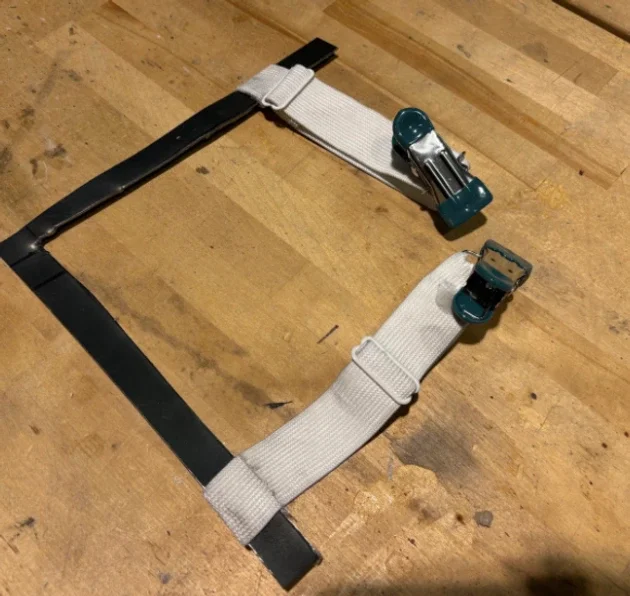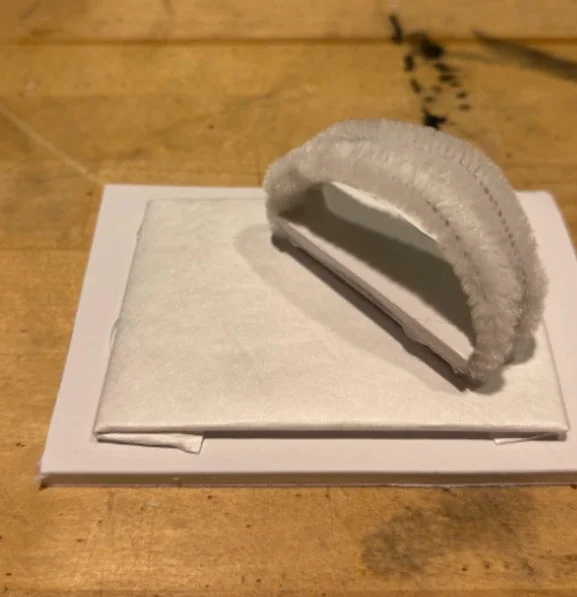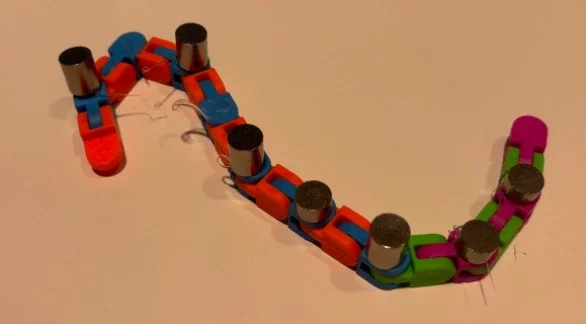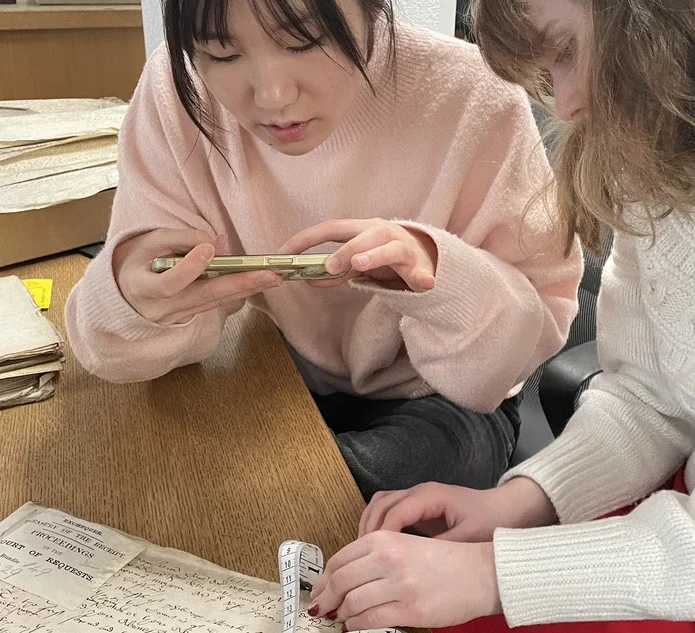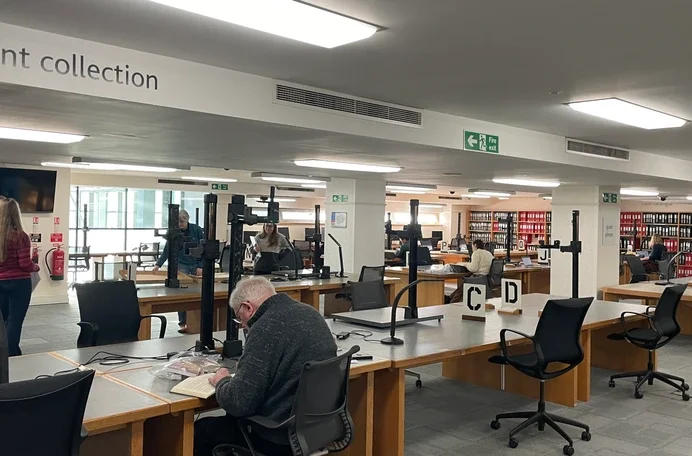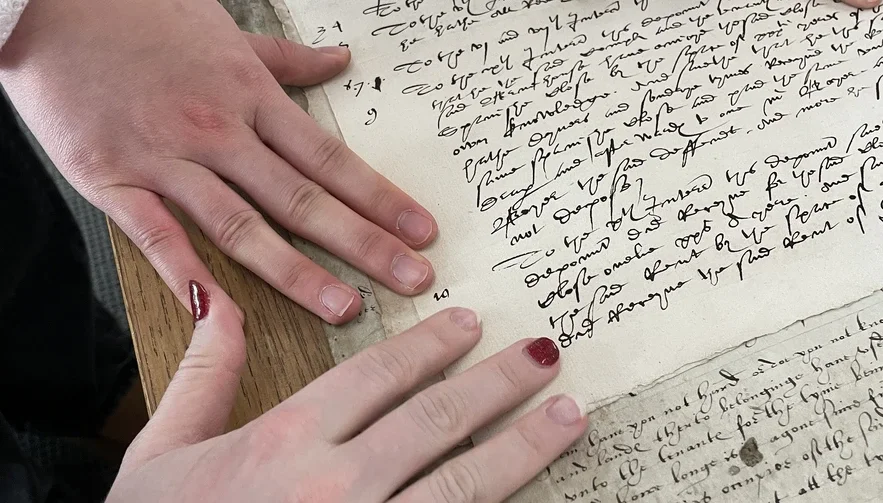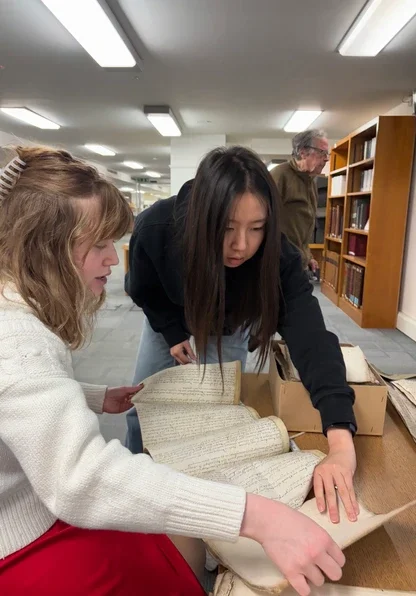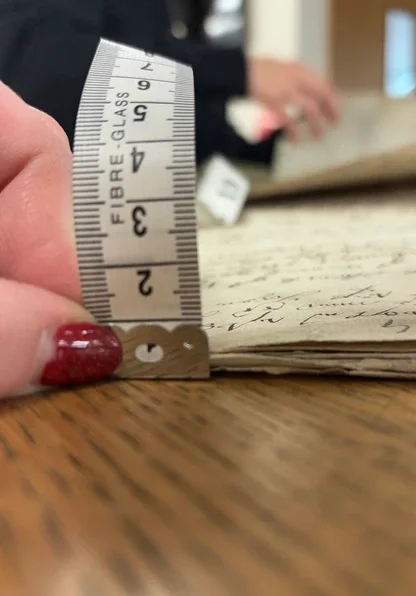Designing for Preservation
GOALS
Professor Emily Kadens of Northwestern’s Pritzker Law School developed Transkribus, an AI model that automates the transcription of pre-modern legal documents from London’s National Archives, improving accessibility for scholars and genealogists while helping organize uncatalogued records. However, because the AI depends on clear, digitized text, the documents’ varying sizes and fragile conditions make accurate photography difficult. Our goal is to create a non-damaging device that safely flattens these manuscripts to enable high-quality digitization for transcription.
MY ROLE
As part of a three-person design team, I contributed to sketching, ideation, and mockup building. I researched materials and archival safety regulations, conducted user testing, and helped create presentations to share our process and results.
TIMELINE
September 2024 to March 2025
Initial Research
USER NEEDS
I researched user needs by interviewing Professor Emily Kadens, along with experts from Northwestern’s Conservation Lab and Archives, to understand the challenges of digitizing fragile historical documents. From these conversations, I learned that users needed a non-damaging, portable, and easy-to-use tool compatible with existing scanning and AI transcription technology. It also had to accommodate varying document sizes and conditions, work without flash or external light, and remain affordable and feasible to produce at the undergraduate level.
DOCUMENT NEEDS
We analyzed photos provided by the user and examined sample documents to understand the physical challenges of flattening pre-modern manuscripts. We found that rag paper is often fragile and prone to tearing, while parchmenttends to be stiff and heavily creased. Both materials frequently have smudged ink and limited margins, making them difficult to handle. These insights guided our prototype design to safely accommodate varying document sizes, textures, and conditions.
Prototyping
From our research, we brainstormed several methods to flatten documents, including applying tension along the sides, using magnets to hold documents down, adding a frame around the edges, and designing the device to be stackable or collapsible for portability. We sketched six concepts and presented them to the team at the National Archives. Based on their feedback, we developed three physical prototypes for testing on actual documents.
Testing
TESTING IN LONDON’S NATIONAL ARCHIVES
Our team visited the National Archives in London to conduct testing with our prototypes. In addition to interacting directly with archivists who work in the environment we are designing for, we had the opportunity to collect essential specs such as document margin size and table size.
By testing our solution in the environment where it will be used, and engaging directly with end-users, we were able to refine our design. Most importantly, we pivoted our design to focus our attention on using magnets.
MAGNET AND CLAMP DAMAGE TESTING
Testing showed that magnets are gentler than clamps, causing less warping on fragile documents. Parchment proved very resilient to both magnets and clamps, while rag paper was more susceptible, especially to clamps. The team concluded that weaker forces should be used on rag paper to minimize damage.
MAGNETIC FORCE TESTING
Testing was conducted to determine the optimal balance between the strength of the interior magnets and the thickness of the magnet casing. We tested the force exerted by various magnet sizes, exterior dimensions, and wall thicknesses on documents to identify the combination that effectively flattens documents while minimizing the risk of damage.
Magnetic Tiles and Kit
Consisting of (1) magnetic tiles and (2) a magnet kit to account for variations in document sizes and conditions, the MagnaFlat functions as a two-piece design that holds archival documents in place and spreads out creases for better legibility. The magnetic tiles will be placed atop the table and the document(s) will be laid on top of the assembled tiles. From there, the user will choose and place magnets from the selection to hold down/flatten the document.
REFLECTION
Working on the MagnaFlat project taught me the importance of understanding user needs, communicating complex ideas clearly, and translating technical research into accessible solutions. By collaborating with scholars, archivists, and conservation experts, I developed skills in interviewing stakeholders, synthesizing feedback, and presenting findings in a compelling way. The project also strengthened my ability to create persuasive presentations and visual materials that explain the value and impact of a product to diverse audiences.
